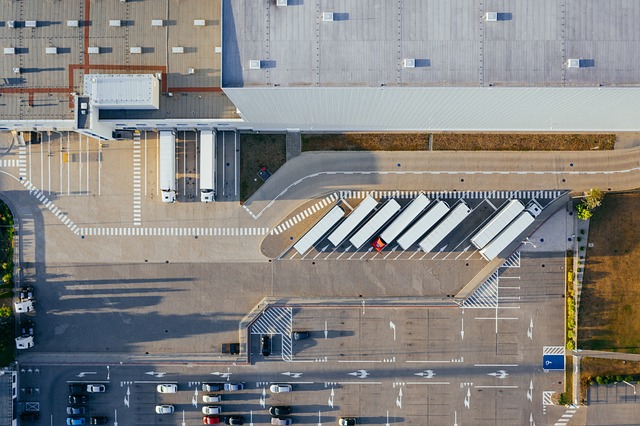Prefabricated Cabins Shipped to Your Area
Prefabricated cabins, also known as prefab or modular cabins, are revolutionizing the way people think about home construction and vacation retreats. These innovative structures are built off-site in controlled factory environments and then transported to their final destination for assembly. This method offers numerous advantages, including reduced construction time, consistent quality, and often lower costs compared to traditional on-site building methods. As the demand for flexible and efficient housing solutions grows, prefabricated cabins are becoming an increasingly popular option for those seeking a quick and hassle-free way to own a cabin home.

What are the benefits of choosing a prefabricated cabin?
Prefabricated cabins offer several advantages over traditional stick-built homes. One of the primary benefits is the speed of construction. Since most of the building process occurs in a factory setting, weather delays are minimized, and the on-site assembly can often be completed in a matter of days or weeks. This rapid construction timeline can significantly reduce labor costs and allow owners to enjoy their new cabin sooner.
Another key benefit is the consistent quality control. Factory-built components are constructed in a controlled environment, which ensures precise measurements, proper material storage, and adherence to strict quality standards. This level of control is often difficult to achieve with on-site construction, especially in remote or challenging locations where prefab cabins are commonly placed.
How are prefabricated cabins transported to their final location?
The transportation of prefabricated cabins is a carefully orchestrated process that varies depending on the size and design of the structure. Smaller cabin modules may be transported on flatbed trucks, while larger units might require specialized trailers or even helicopter transport for remote locations. The cabins are typically secured and protected for the journey to prevent damage during transit.
Once at the destination, cranes or other heavy equipment are used to place the cabin modules onto a prepared foundation. The modules are then joined together, and finishing work is completed to ensure a seamless connection between the parts. This process can often be completed much faster than traditional construction methods, minimizing disruption to the surrounding environment.
What types of prefab cabins are available in the market?
The market for prefabricated cabins offers a wide range of options to suit various needs and preferences. Some popular types include:
-
Tiny Cabin Homes: Compact, efficient spaces perfect for minimalist living or vacation retreats.
-
Log Cabin Kits: Pre-cut and numbered logs that can be assembled on-site, offering a traditional cabin aesthetic.
-
Modular Cabins: Larger structures composed of multiple modules that can be combined to create spacious homes.
-
Container Cabins: Repurposed shipping containers converted into stylish and eco-friendly living spaces.
-
Panel-Built Cabins: Constructed using pre-made wall, floor, and roof panels for quick assembly.
Each type of prefab cabin has its own unique advantages, allowing buyers to choose the option that best fits their lifestyle, budget, and desired location.
What are the customization options for prefabricated cabins?
Contrary to popular belief, prefabricated cabins offer a high degree of customization. Many manufacturers provide a range of floor plans and design options that can be tailored to the buyer’s preferences. Customization options often include:
-
Exterior finishes and colors
-
Interior layouts and room configurations
-
Appliance and fixture upgrades
-
Flooring and cabinetry choices
-
Energy-efficient features and smart home technology
-
Deck and porch additions
While the level of customization may not be as extensive as with a fully custom-built home, prefab cabins still offer significant flexibility to create a personalized living space that meets individual needs and tastes.
How do prefab cabins compare to traditional construction in terms of cost?
When it comes to cost, prefabricated cabins often present a more affordable option compared to traditional on-site construction. The controlled factory environment allows for more efficient use of materials, reducing waste and lowering overall costs. Labor expenses are typically lower due to the shorter construction time and the use of specialized assembly line processes.
However, it’s important to note that the final cost of a prefab cabin can vary widely depending on factors such as size, customization, transportation distance, and site preparation. Here’s a general comparison of prefab cabins versus traditional construction:
| Aspect | Prefab Cabins | Traditional Construction |
|---|---|---|
| Construction Time | 6-12 weeks | 6-12 months |
| Labor Costs | Lower | Higher |
| Material Waste | Minimal | Higher |
| Customization | Limited but available | Extensive |
| Site Impact | Minimal | Significant |
| Average Cost Range | $150-$400 per sq ft | $200-$500 per sq ft |
Prices, rates, or cost estimates mentioned in this article are based on the latest available information but may change over time. Independent research is advised before making financial decisions.
Who are some reputable prefab cabin manufacturers in the United States?
Several manufacturers in the United States specialize in producing high-quality prefabricated cabins. Here’s a comparison of some well-known providers:
| Provider | Types of Cabins | Key Features |
|---|---|---|
| Clayton Homes | Modular and Tiny Homes | Customizable designs, energy-efficient options |
| Blu Homes | Modern Prefab Homes | Eco-friendly materials, folding technology for transport |
| Method Homes | Custom Modular Homes | LEED-certified options, precision engineering |
| Wheelhaus | Luxury Tiny Homes | High-end finishes, RV-certified models available |
| Yankee Barn Homes | Post and Beam Cabins | Traditional aesthetics, energy-efficient shell |
These manufacturers offer a range of styles and sizes to suit various preferences and budgets. It’s advisable to research each provider thoroughly and request detailed quotes before making a decision.
In conclusion, prefabricated cabins offer an attractive alternative to traditional construction for those seeking a quicker, more efficient path to cabin ownership. With their blend of affordability, quality control, and customization options, prefab cabins are well-positioned to meet the growing demand for flexible housing solutions across the United States.






